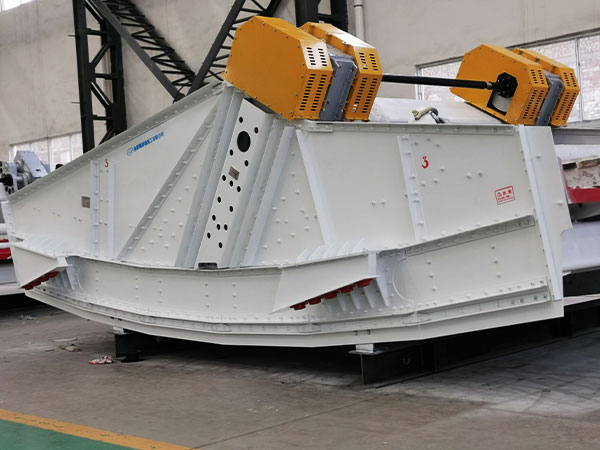What are the screening methods of linear vibrating screen?
Linear vibrating screen is very suitable for assembly line operation, and it has the advantages of low energy consumption, high output, and automatic discharge, which makes it less common in the mining industry. The general screening process is that the material enters the feed port of the equipment evenly from the feeder, and the screen produces the screened material and the screened material through the screen, which are discharged from their respective outlets. The linear vibrating screen also has different screening methods.
Linear vibrating screen screening method

1. Linear vibrating screen dry screening
The so-called linear vibrating screen dry screening, as the name suggests, is to calculate the sum of the screen residue and the screen bottom inventory of each screen and the difference between the total dry mass of the sample before screening, as the loss during screening, and calculate the loss rate, put a certain weight of powder sample in the screen, with the help of mechanical vibration or manual patting to make the fine powder pass through the screen until the screening is complete, and the screen residue of the powder sample is calculated according to the weight of the screen residue and the weight of the sample. When measuring the particle size distribution, dry screening is generally used.
2. Linear vibrating screen overlapping method screening
Overlapping method screening means that in the process from coarse screen to linear vibrating screen, the screen surface of the vibrating screen overlaps, the screen hole of the upper screen surface is larger, and the subsequent layers gradually decrease, because there are gaps on both sides of the linear screen frame, which may lead to screening accuracy. This screening method is simplified and suitable for the processing of a large number of materials
3. Linear vibrating screen wet screening
Linear vibrating screen wet screening is to place a certain weight of powder sample in the screen, and after being washed for a certain period of time by a suitable dispersed water flow (with a certain water pressure), the screening is complete. The wet screening method is to calculate the screen residue of the powder sample according to the weight of the screen residue and the weight of the sample. If the sample contains more water and the particles are more condensed, wet screening should be used (with higher accuracy than dry screening), especially for materials with finer particles. If it is allowed to mix with water, try to use the wet method. Because the wet method can prevent very fine particles from adhering to the screen holes and blocking the screen holes. In addition, the wet method is not affected by the material temperature and atmospheric humidity, and the wet method can also improve the operating conditions. Therefore, both the wet method and the dry method have been listed as standard methods and acted in parallel as a method for determining the fineness of cement and raw materials.
4. Screening by layered sequence method of linear vibrating screen

Generally speaking, the screening of multi-layer linear vibrating screen equipment is from coarse to fine, with a very thick screen at the top and decreasing downwards. The equipment is easy to repair and convenient for observing the working conditions of the screen surface of each layer of the equipment. In the coarse screen, the screen surface order is reversed. The shaft equipment and the vibrating screen can be discharged separately along the entire length of the screen surface, the screening effect is obvious, and the layers do not affect each other.
5. Screening by dry and wet combination method of linear vibrating screen
Screening by dry and wet combination method of linear vibrating screen is to combine the two methods and take the best from them. When the material contains more water and mud, and the materials are bonded to each other, the dry and wet combined screening method should be used, and the screening results are more accurate. The specific method is to first pour the sample into a fine-mesh sieve and screen it in a basin filled with water. Every 1 to 2 minutes, replace the water in the basin until the water in the basin is no longer turbid. The material on the screen is dried and weighed, and the mass of the washed fine mud is calculated based on the difference between the weighed mass and the mass of the original sample.
6. Linear vibrating screen coarse and fine combined screening method

In the combination process of linear vibrating screen coarse and fine combined screening, part of the screen surface is arranged from coarse to fine, and the other part is arranged from fine to coarse; In actual production, circular vibrating screens usually adopt coarse to fine or combined screening processes; Based on the special requirements of the screening material, the screening accuracy and trajectory of the circular vibrating screen are ideal, which is suitable for screening coarse ores.
In summary, there are six screening methods for linear vibrating screens, namely dry screening, wet screening, dry and wet combined screening, overlapping screening, layered sequence screening, and coarse and fine combined screening. These screening methods can meet the user’s screening requirements for different materials, and can also be applied to the screening of the same materials, but some special materials still need to find a suitable screening method. No matter what screening method is chosen, the material should be fed evenly, the particle size of the material should be adjusted, and the material should not be blocked by the screen.



